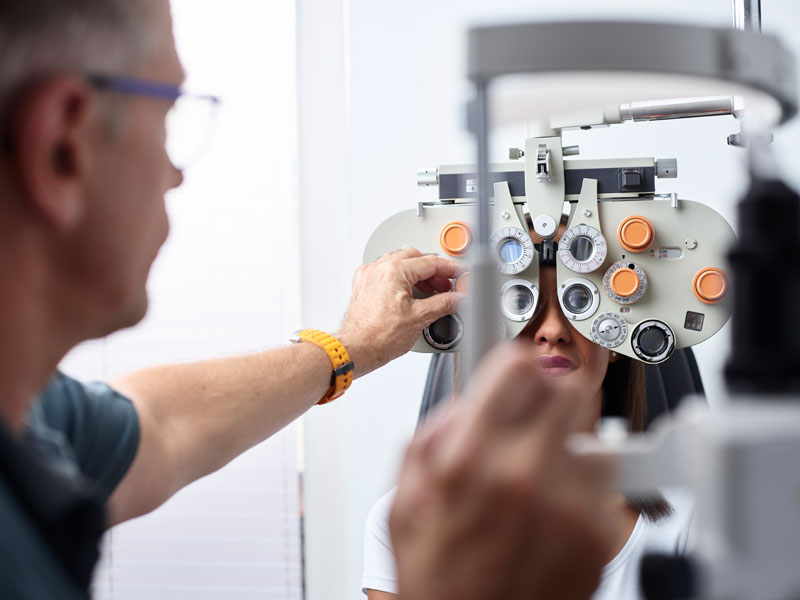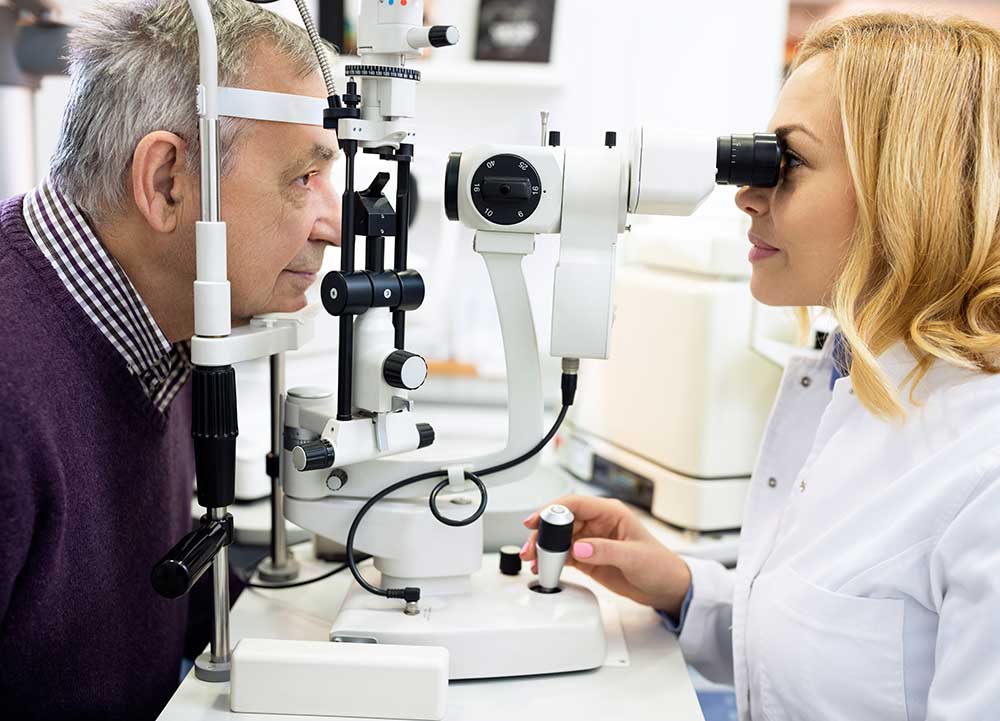Comprehending the Role of Your Eye Doctor in Preserving Vision
Comprehending the Role of Your Eye Doctor in Preserving Vision
Blog Article
Exploring the most recent Technological Developments in Optometry and What They Mean for Eye Doctors
In the ever-evolving field of optometry, current technological innovations are reshaping how experts approach eye care. From the precision of Optical Coherence Tomography to the nuanced insights supplied by AI-driven analysis tools, these technologies are establishing new criteria in individual analysis and treatment. Teleoptometry is poised to redefine accessibility, guaranteeing that competence transcends geographical constraints. As these innovations penetrate the practice, optometrists are encountered with the challenge of welcoming these tools to boost person results. The concern continues to be: exactly how will these technical shifts redefine the duties and responsibilities within the occupation?
Developments in Diagnostic Equipment
Progressing the area of optometry, developments in analysis devices have changed the method eye treatment specialists assess and identify aesthetic disabilities and eye conditions. The previous decade has experienced substantial technological developments, enabling more detailed and accurate assessments.
Another key development is the intro of sophisticated corneal topography systems, which map the surface area curvature of the cornea with precision. These devices are particularly useful for fitting call lenses and detecting corneal disorders. Electronic retinal imaging has actually transformed traditional ophthalmoscopy, supplying detailed, scenic views of the retina that promote comprehensive visual evaluations.
The development of wavefront aberrometry has also been vital, allowing the evaluation of refractive mistakes with unparalleled precision (Optometrist Chino). This technology assists in customizing corrective lenses and boosting medical outcomes for refractive surgeries. Jointly, these diagnostic developments encourage eye doctors to provide superior individual treatment, making certain very early intervention and customized therapy strategies, ultimately enhancing visual wellness end results
AI in Individual Administration
Building on the structure of sophisticated diagnostic tools, the incorporation of expert system (AI) in person administration stands for a transformative jump for optometry. AI systems are increasingly utilized to boost efficiency, accuracy, and customization in patient care. By assessing substantial quantities of information, AI can determine patterns and anticipate potential ocular problems, enabling optometrists to tailor treatments more properly. This capacity is essential in taking care of persistent eye conditions such as glaucoma and diabetic person retinopathy, where early discovery and constant monitoring are key.
In addition, AI-driven systems facilitate streamlined individual interactions and management procedures. Automated scheduling, online consultations, and personalized follow-up plans not only improve person complete satisfaction however additionally maximize time monitoring for experts. These systems can triage clients based upon the seriousness of their problems, ensuring that those in crucial requirement get punctual interest.
Additionally, AI improves decision-making by providing optometrists with evidence-based recommendations and therapy pathways. By incorporating data from digital wellness documents, AI tools offer understandings that educate medical choices, reducing the risk of errors and boosting client end results. As AI continues to advance, its role in individual management will likely broaden, improving the landscape of optometric treatment.
Developments in Retinal Imaging
In the world of optometry, retinal imaging has actually observed amazing technical advancements that are boosting analysis capabilities and client care. Innovations such as Optical Comprehensibility Tomography (OCT) and fundus photography have transformed just how eye doctors examine the retina and picture.
Improved imaging techniques like OCT angiography are further refining analysis accuracy. Opticore Optometry. Such developments help with the identification of min retinal modifications that could symbolize illness progression.
Additionally, advancements in expert system are boosting retinal imaging by allowing computerized evaluation of big datasets. These systems help eye doctors in recognizing patterns indicative of pathology, therefore improving diagnostic accuracy and effectiveness. Collectively, these technologies are changing retinal imaging right into a keystone of contemporary eye care, improving outcomes and broadening healing opportunities.
Teleoptometry's Growing Function
Teleoptometry is increasingly becoming a vital element of eye care, driven by advancements in digital communication and analysis devices. As optometry welcomes digital makeover, teleoptometry assists in remote consultations, enabling optometrists to expand their services beyond traditional boundaries. This is particularly useful in underserved and rural areas where access to specialized eye care is commonly minimal. By leveraging high-resolution video clip conferencing and advanced retinal imaging, optometrists can perform detailed eye tests from afar, ensuring timely medical diagnosis and treatment.
The integration of synthetic intelligence (AI) more boosts teleoptometry, making it possible for the analysis of aesthetic data and helping in the discovery of eye conditions such as glaucoma and diabetic person retinopathy. AI-powered algorithms can quickly translate complex imaging information, offering eye doctors with beneficial insights that bolster scientific decision-making.
Additionally, teleoptometry supports continuity of care through seamless combination with digital health and wellness records (EHRs), allowing eye doctors to preserve comprehensive client histories. This makes sure that patients receive individualized and regular treatment even when talking to various experts.
In spite of these benefits, challenges remain, consisting of ensuring data safety and security and taking care of individual expectations. Teleoptometry stands for a considerable stride towards more obtainable, efficient, and patient-centered eye treatment. As innovation evolves, its role is poised to increase additionally.

Future Trends in Eye Treatment
A myriad of innovative fads is readied to reshape the future of eye care, driven by technical innovations and the evolving needs of patients. One significant trend is the assimilation of expert system (AI) in diagnostics, which promises to boost the accuracy and performance of eye examinations. AI algorithms can have a peek at these guys evaluate vast quantities of information from retinal pictures, potentially spotting conditions like diabetic person retinopathy and glaucoma earlier than conventional techniques.
Furthermore, customized medication is gaining traction in optometry, with hereditary screening educating personalized therapy strategies. This approach aims to optimize patient end results by tailoring treatments to individual genetic accounts. Wearable innovation, such as clever get in touch with lenses, is additionally on the perspective, offering real-time tracking of intraocular stress or sugar degrees, hence providing constant insights right into ocular their explanation and systemic health and wellness.
The fostering of augmented fact (AR) and digital fact (VR) in training and person education is an additional emerging fad. These modern technologies use immersive experiences that can boost understanding and skills both for eye doctors and people. As these patterns develop, optometrists have to remain abreast of technological innovations to provide innovative care, making certain better patient outcomes and complete satisfaction in the dynamic landscape of eye treatment.
Final Thought

Collectively, these analysis improvements empower eye doctors to provide remarkable person care, making certain very early intervention and tailored therapy techniques, inevitably improving visual wellness results.

As these technologies proceed to his response evolve, eye doctors need to adjust and incorporate them into technique, eventually maximizing workflow effectiveness and elevating the criterion of eye treatment provided to individuals.
Report this page